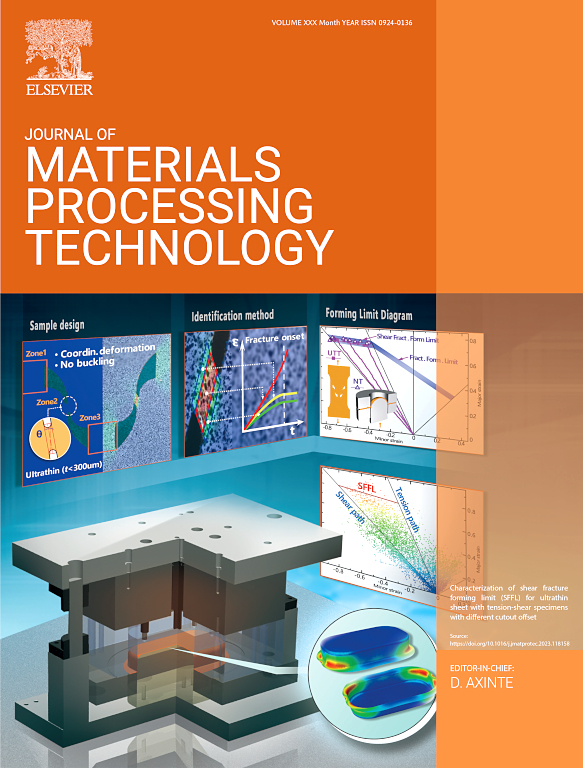Strategic design of oxidation-resistant nickel-based superalloys: Comparative study of enhancing mechanism of Y2O3 doping and Y alloying on the high-temperature oxidation
IF 7.5
2区 材料科学
Q1 ENGINEERING, INDUSTRIAL
Journal of Materials Processing Technology
Pub Date : 2025-07-19
DOI:10.1016/j.jmatprotec.2025.118991
引用次数: 0
Abstract
Nickel-based superalloys fabricated via laser powder bed fusion (LPBF) suffer from microsegregation and microdefects due to rapid solidification, which destabilize the oxidation protective layer and accelerate high-temperature oxidation, severely deteriorating their oxidation resistance during high-temperature service. In this work, two distinct powder processing strategies, Y2O3 nanoparticles doping and Y element alloying, were employed to enhance the high temperature oxidation resistance of LPBF Hastelloy X (HX) nickel-based alloy through targeted microstructural engineering. The results show that both Y2O3-doping (HX-Y2O3) and Y-alloying (HX-Y) can enhance the high-temperature oxidation resistance of HX alloy. Compared to the HX sample, the parabolic oxidation rate constant of the HX-Y2O3 and HX-Y samples decrease from 12.46 × 10−3 mg2 cm−4 h−1 to 1.45 × 10−3 mg2 cm−4 h−1 and 0.2312 × 10−3 mg2 cm−4 h−1, respectively. Y2O3 nanoparticles provide extra nucleation sites for oxidation products, contributing to the rapid formation of dense oxide layers. As for the HX-Y alloy, the Y element can effectively occupy the grain boundary (GB) vacancies and reduce the diffusion rate of the oxide-forming elements, thus significantly reducing the oxidation rate and improving the adherence and the resistance to spallation of the oxide layer. This study establishes a fundamental framework correlating powder processing strategies with oxidation protection mechanisms. The findings provide generalized guidelines for designing oxidation-resistant additive manufacturing (AM) alloys through targeted microstructural engineering during powder processing. Furthermore, the developed principles demonstrate substantial potential for extension to other oxidation-susceptible alloy systems.
抗氧化镍基高温合金的策略设计:Y2O3掺杂与Y合金化对高温氧化增强机理的比较研究
激光粉末床熔合法制备的镍基高温合金由于快速凝固而产生微偏析和微缺陷,使氧化保护层失稳,加速高温氧化,严重降低了高温使用过程中的抗氧化性。本文采用Y2O3纳米颗粒掺杂和Y元素合金化两种不同的粉末加工策略,通过针对性的显微组织工程提高LPBF Hastelloy X (HX)镍基合金的高温抗氧化性。结果表明:y2o3掺杂(HX- y2o3)和y合金化(HX- y)均能提高HX合金的高温抗氧化性。与HX样品相比,HX- y2o3和HX- y样品的抛物线氧化速率常数分别从12.46 × 10−3 mg2 cm−4 h−1降低到1.45 × 10−3 mg2 cm−4 h−1和0.2312 × 10−3 mg2 cm−4 h−1。Y2O3纳米颗粒为氧化产物提供了额外的成核位点,有助于快速形成致密的氧化层。对于HX-Y合金,Y元素可以有效地占据晶界(GB)空位,降低氧化形成元素的扩散速率,从而显著降低氧化速率,提高氧化层的附着性和抗剥落性。本研究建立了粉末加工策略与氧化保护机制之间的基本框架。研究结果为通过粉末加工过程中的定向显微组织工程设计抗氧化增材制造(AM)合金提供了通用指南。此外,所开发的原理显示出扩展到其他氧化易感合金体系的巨大潜力。
本文章由计算机程序翻译,如有差异,请以英文原文为准。
求助全文
约1分钟内获得全文
求助全文
来源期刊

Journal of Materials Processing Technology
工程技术-材料科学:综合
CiteScore
12.60
自引率
4.80%
发文量
403
审稿时长
29 days
期刊介绍:
The Journal of Materials Processing Technology covers the processing techniques used in manufacturing components from metals and other materials. The journal aims to publish full research papers of original, significant and rigorous work and so to contribute to increased production efficiency and improved component performance.
Areas of interest to the journal include:
• Casting, forming and machining
• Additive processing and joining technologies
• The evolution of material properties under the specific conditions met in manufacturing processes
• Surface engineering when it relates specifically to a manufacturing process
• Design and behavior of equipment and tools.
 求助内容:
求助内容: 应助结果提醒方式:
应助结果提醒方式:


